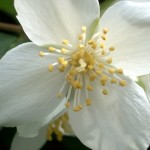Beth L Barnett
Organic or Non organic . . . Cont.
I’ve heard a lot about growth hormones in the food we eat so I thought I would find out for myself what all the angst is about.
The technical name for growth hormones is rBGH which stands for recombinant Bovine Growth Hormone or or rBT (recombinant Bovine Somatropin . . . a synthetic version of human grow hormone.) Webster defines recombinant as relating to or containing genetically engineered DNA. It is used to increase milk production in dairy cows. Until 2009, Monsanto was the only vendor of rBGH. Under the trademark Posilac, It was approved by the Food and Drug Administration in 1993 and by 1998, 30% of all milk in the US contained genetically modified hormones.
In the interim years, numerous studies were done on the use of rBGH with the result that Canada, Australia, the European Union and Japan banned its use due to animal and human health concerns.
Some of these studies reported that cows injected with rBGH were subject to increased mastitis, lameness and birth defects which farmers then had to treat with antibiotics. Monsanto vehemently denied these claims and continued to applied pressure to dairy farmers to increase milk production by using rBGH.
Because of greater public awareness, a group of farmers formed a co-op that produces “organic rBGH free’ dairy products. The FDA continues to approve the use of ‘rBGH free’ labeling with the caveat that no significant differences have thus far been proven.
rBGH made billions of dollars for Monsanto. Even so, the company sold it to Eli Lilly for 300 million dollars, which projects sales of up to 500 million world wide.
Powerful lobbyists have tried to persuade legislators to ban the’ rBGH Free’ labels but some states including Kansas and Missouri have thus far resisted. Consumer’s Union, publishers of Consumer’s Report sides with the organic farmers, sighting a “significant statistical increase of hormone insulin-like growth factor (in humans). . . that has been linked to breast, colo-rectal and prostate cancer . . .”
So just be aware! This is a highly controversial subject and mountains of information exist concerning the use of rBGH. In the meantime, Kroger, Safeway and Walmart have heard the concerns of their customers and have banned the use of rBGH in their store brand dairy products.
Almost 100 billion eggs are produced yearly in the United States. Organic eggs are best even though they probably don’t provide any added health benefits. They also don’t contain drugs, pesticides or antibiotics.
Chickens are the least protected animals in agribusinesses. Those crammed into inhumane wire battery cages, may produce eggs up to a year before being slaughtered.
Free range can mean chickens running around in the farmer’s back yard or crowded into chicken houses but not contained in cages. If the carton says organic, then the chicken is certified by the US department of Agriculture as “cage free, healthy and can engage in natural behavior.”
Finally, regardless of their living conditions, if the beef, lamb and pork we eat have been fed food that contain insecticides, herbicides or genetically engineered hormones, then we ingest those contaminates into our bodies.
I went to Whole Foods last week and bought all grass fed meats. True, it is more expensive and we can’t tell much difference in the taste (which may be due to my cooking) but it makes us feel like we’re doing something good for ourselves.
Organic or Not
I’ve been having a big argument with myself about whether to buy organic or non-organic foods so I decided to do some investigating. The results surprised me.
Until the 20th century, almost all our food was raised organically. The discovery… Continue reading
Mark Rothko and Abstract Expressionism by guest blogger Pinky Kase
Time flies and it is important to keep all your memories categorized and maintained while your mind is still in functioning order. So let me first engage you in a short history of our relationship with the… Continue reading
Anti-Semitism
Invitations to join Phi Lambda Phi sorority went out during the first semester of my high school freshman year. I was thirteen. I stared at the card and sighed. The tomboy in me revolted but I knew my mother… Continue reading
The “Nature” of Kaleidoscopes
If you look deep into the heart of a tulip, you may be fortunate enough to see a kaleidoscope’s colorful, random design before it fades away.
A Scotsman named David Brewster is credited with inventing the kaleidoscope in the early… Continue reading





